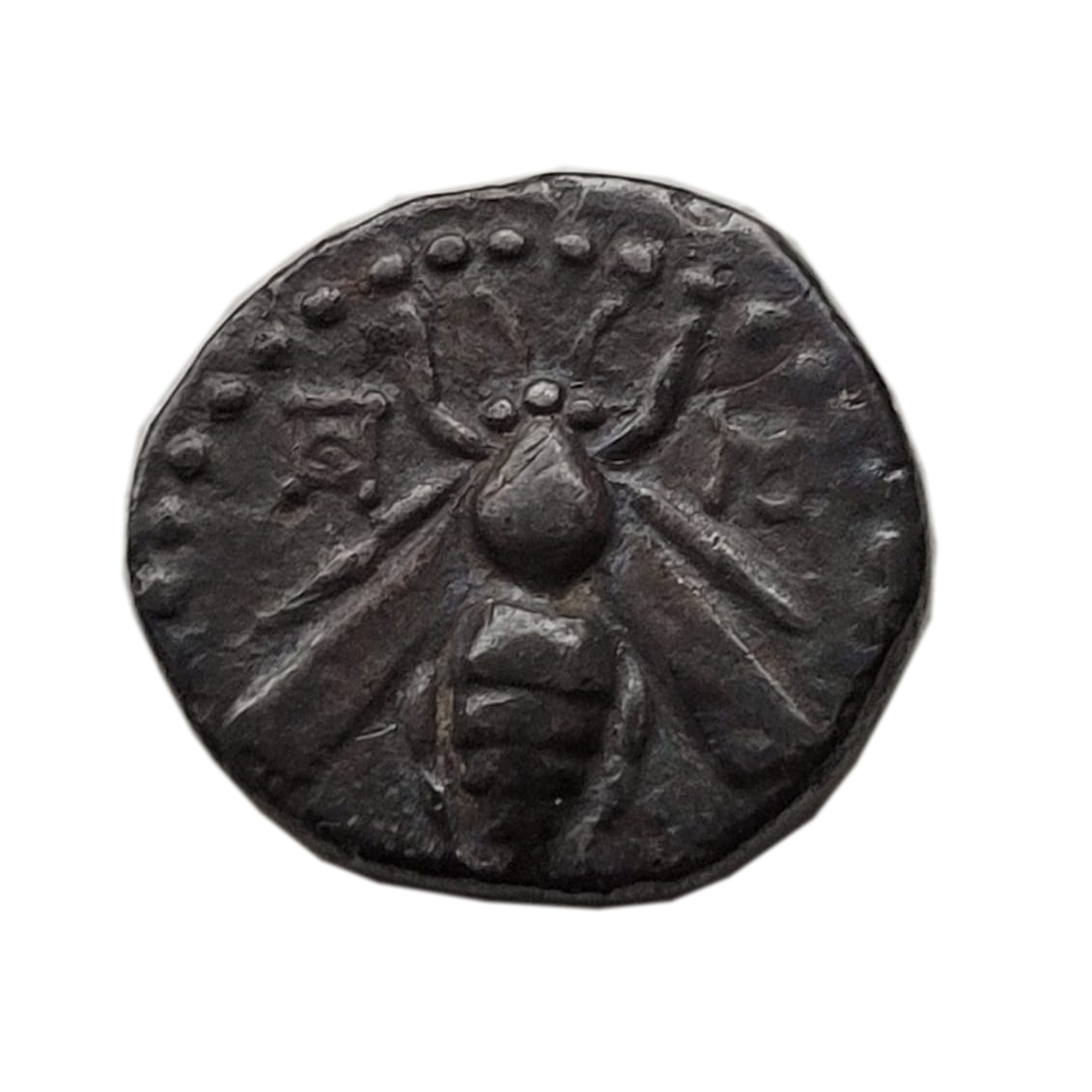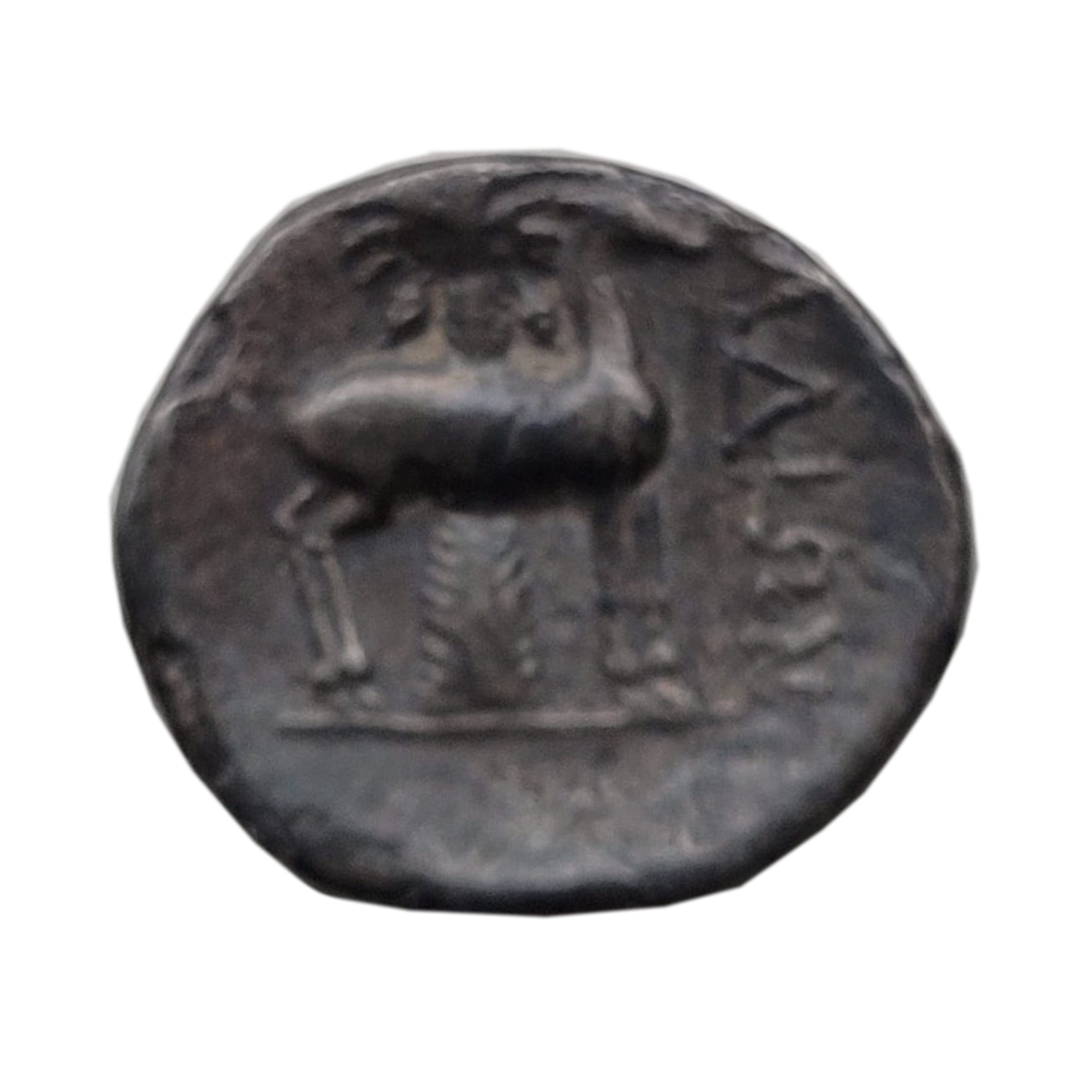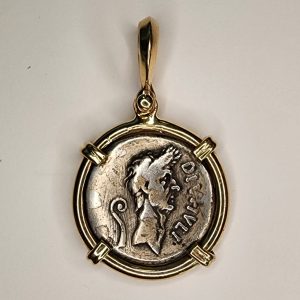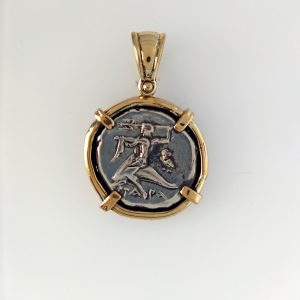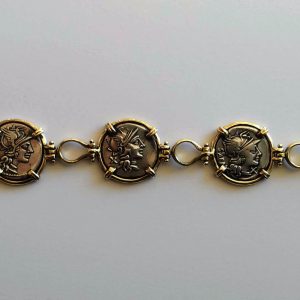Description
This coin is a silver drachm minted in the Phoenician city of Arados (off the coast of modern-day Syria), circa 172-111 BC. The obverse depicts a honeybee and the reverse depicts a stag standing right, in front of a palm tree.
This coin is an imitation of a Greek coin that was minted in Ephesus, Ionia, which was the location of a famous temple to the goddess Artemis and used the bee and stag as civic symbols. Artemis was the goddess of nature, wilderness, wild animals, the hunt, chastity and childbirth. Both Ephesus and Arados were great commercial centres on the coast of the Mediterranean and coins from Ephesus were widely circulated in Arados, which began to produce its own version of these coins around 202 BC. The bee and the stag are symbols of Artemis.

